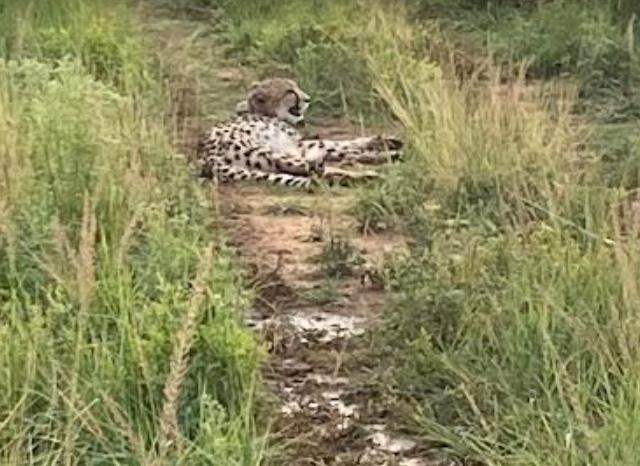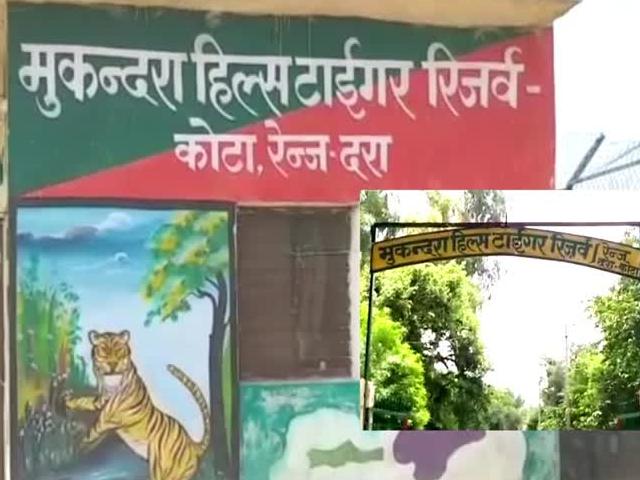A Silver Lining
Also read: Tiger Takes Care of Injured Tigress & Cubs in Bhopal
But one of them, Asha ,has moved out of Kuno and wandered in the forests of the neighbouring Shivpuri. Now 8 South African cheetahs are still inside the enclosures making the African officials and its experts restless. Vincent van der Merwe, Cheetah Metapopulation manager in South Africa and one of the most vocal experts supervising the project has already recommended the release of all the cheetahs in the wild “ immediately.” Responding to the news agency PTI on concerns over some cheetahs being kept in enclosures for longer durations, he had said all the cats should be released into the wild immediately. "They have been in captive conditions for seven months in South Africa and for three months now in India. The problem is that Kuno is an unfenced system. We know that the cheetahs are simply going to walk out of it," he said.
Major Differences
In fact this is the key issue of concern. There is a major difference between the key South African expert and the Indian bureaucrats over the issue of fencing. As the wildlife conservation in India revolved around tigers, no Indian jungle was fenced. This has helped the movement of tigers and their gene flow. Dispersal and gene flow in a metapopulation maintain local demographic and genetic variation, and increase the probability of species persistence, experts said. Suddenly the African cheetah, not even mentioned in the National Wildlife Action Plan (2017-2031), was airlifted and released in Kuno without all the required preparations leading to the issue of fencing . India does not want fenced habitats for cheetahs like the ones in South Africa and Namibia as it is against the basic tenets of wildlife conservation, Rajesh Gopal the newly appointed head high-level committee set up to monitor the cheetah project said . Vincent van der Merwe of the cheetah population strongly recommends the fencing.
Also read: 11 Cheetahs To Be Released In 2 Months, South Africa Announces Midst Minister's Questioning
"There has never been a successful reintroduction (of cheetahs) into an unfenced reserve in recorded history. It has been attempted 15 times in Africa and it failed every time. We are not advocating that India must fence all of its cheetah reserves, we are saying that just fence two or three and create source reserves to top up sink reserves.” Fencing is done to mitigate human-wildlife conflict and pressures of predation or poaching on endangered species. "We have our own socio-cultural issues. We have been handling tigers for the last 50 years and we know what the human-wildlife interface is. We can handle cheetahs too," Rajesh Gopal said. Besides fencing, the South African experts are also concerned over the lack of prey in Kuno and an alternate site for the cheetahs. In April, the Madhya Pradesh Forest Department had written a letter to the National Tiger Conservation Authority, requesting an 'alternate' site for the cheetahs at Kuno, where three adult cheetahs have died in less than two months, besides the Thursday deaths. Van der Merwe has recommended release of “at least three or four cheetahs to Mukundura Hills, and let them breed up there.” "Mukundra Hills is fully fenced. We know that cheetahs will do very well there. The only problem is that it's not fully stocked at the moment. So you'll have to bring in some black buck and chinkara. But the NDA government in centre is not ready to consider Mukundura in Rajasthan, a Congress ruled state.
Utilise Mukundura Hills Reserve: Prof Adrian
Professor Adrian S.W. Tordiffe, a South African Veterinary Wildlife Specialist involved in the cheetah project from the beginning, differs with Vincent over the issue of fencing but he still recommends Mukundara Hills reserve for cheetahs. In an email conversation with thewildlifeindia.com, the eminent veterinarian said, “There are certainly some advantages to fenced reserves, but I do not necessarily agree with Vincent if he is suggesting that the cheetahs must only be accommodated in fenced reserves in India.” Vincent has stated that , Adrian said, cheetah reintroductions into non-fenced areas in the past have all failed. There are however important factors that need to be taken into consideration, he said. .” Firstly, all of those failed reintroductions happened with very little or no post-release monitoring and secondly, all took place in Africa where poaching and snaring are a massive problem”. He said that the situation in India is very different.
Also read: Stressed & Unhappy After Long Captivity , Kuno Cheetahs Need To Be Released In The Wild
All the cheetahs that are being released into Kuno National Park are fitted with satellite collars and are being intensely monitored. The risk for poaching or retaliatory killing of cheetahs in India is also far lower than in Africa, he stated. . “ My view is that we should still utilise some of the fenced reserves, like Mukundura Hills in India for the cheetah project, but I certainly believe that it is worth releasing most of the cheetahs into open free-ranging conditions as long as the post-release monitoring continues until the released animals establish stable territories.” He also said “ I do not think it is a good idea to release all the cheetahs from the acclimatisation camps in Kuno in a short space of time before the onset of the monsoon season. This will place an enormous load on the monitoring system and may cause unnecessary conflict amongst the animals as they try to establish territories”. He said “I believe a staggered approach is far better, in that we can assess the progress of the project at a more manageable rate and can make any adjustments as and when required.”





Comments
Post a Comment